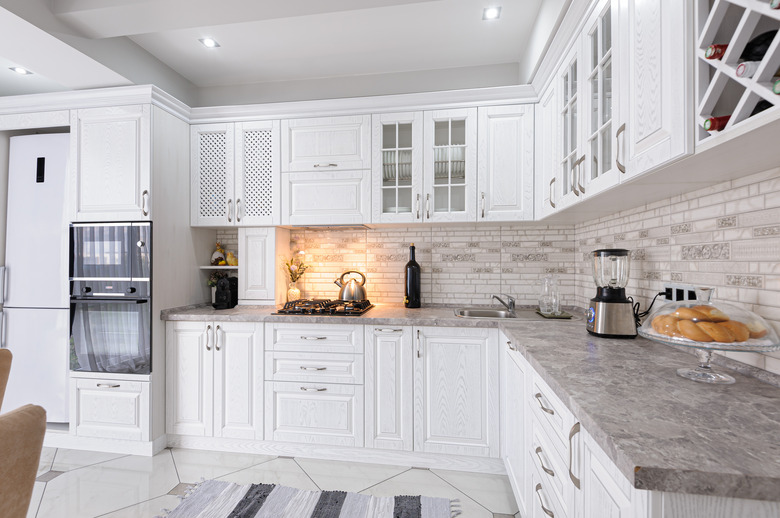How To Tell If Your Kitchen Cabinets Are Real Wood
When designers talk about real wood cabinets, they are usually referring to the doors, the drawer faces and the cabinet face frames — in short, all the parts you can see. The interior of the cabinets, including the cabinet boxes, the shelves and the drawer boxes, are seldom made of the same material as the doors and drawer fronts, but that doesn't mean they aren't made of wood. Plywood is wood, and cabinetmakers prefer it over less-expensive particleboard, which actually is also technically wood. However, plywood and particleboard are considered "engineered wood" products because they're made with thin layers (plywood) or tiny wood pieces (particleboard) bound with resin.
Distinguishing Real Wood From Engineered Wood
Distinguishing Real Wood From Engineered Wood
When it comes to appearance, the door and drawer fronts of a kitchen cabinet matter most, and manufacturers are very adept at creating engineered products that look like solid wood, and you have to look carefully to tell them apart. This is because the surface is actually a thin veneer of real wood adhered to a panel made of plywood or particleboard. Often, exposed edges of these panels are covered with a thin band of veneer to enhance the illusion. Busby Cabinets offers some dead giveaways for engineered wood:
- Check the edges of the doors and drawers. If they are solid wood, you'll see end grain on the tops and bottoms. If they're engineered, you'll see edging material with a longitudinal wood grain, which looks unnatural.
- Check the corners. Real wood corners are usually shaped or rounded, while engineered ones are often sharp and square.
- Examine any nicks or chips. If they're deep enough or if they're on the door edges, they'll reveal the plywood or particleboard core.
If the doors are painted, you can usually see the grain running on the top or bottom edge of the door underneath the paint, and you can also tell by the corners whether the underlying material is solid wood or not.
Wood Cabinets Have Dovetail Joints
Wood Cabinets Have Dovetail Joints
Real wood is expensive, and it's rare for cabinetmakers to build entire cabinets with it. It's not unheard of, though, and when a cabinetmaker invests that much money into a cabinet, the workmanship tends to be top-quality. Dovetail joints are one of the most recognizable signs of quality craftsmanship.
Look inside the drawers and examine the joints between the door faces and the rest of the frame. If you see that the joint was assembled with interlocking "fingers," which is known as a dovetail joint, the drawer is likely made of solid wood. It's possible, but tricky, to make these joints when working with plywood, and dovetails are never done with particleboard. You might also see dovetail joints in the cabinet facing and in other places, such as the corners between the front and sides and in built-in features, such as a cutting board or spice rack.
Factory-made drawers can also have dovetail joints, and when they do, it means they're made out of solid wood. It may be inexpensive pine — and not a hardwood — but it's still wood.
Real Wood Isn't Necessarily Better
Real Wood Isn't Necessarily Better
If inspection reveals that the doors are not solid wood, that's not necessarily a bad thing. Particleboard and plywood are less classy than genuine cherry, maple and mahogany, but Boston Building Resources reminds you that they have their advantages. For one thing, they're less expensive, but that's not all.
Both plywood and particleboard are more dimensionally stable than solid wood. They expand and contract in all directions rather than along the grain, so they're less likely to warp. That means that a cabinet made with either of these materials could stand up better than one made of wood. Particleboard's propensity to absorb moisture can be a drawback, though, especially in the kitchen, and swelling is another way to identify cabinet doors and drawers constructed with it.
